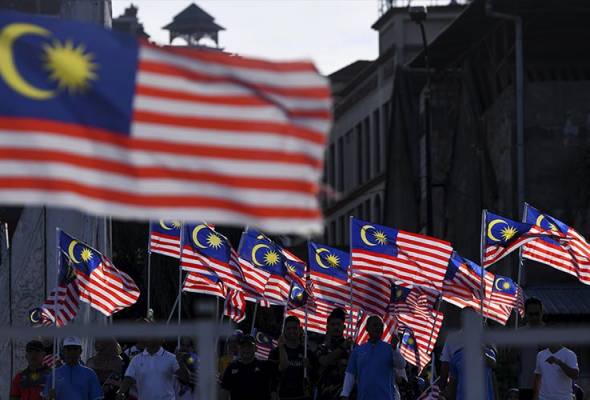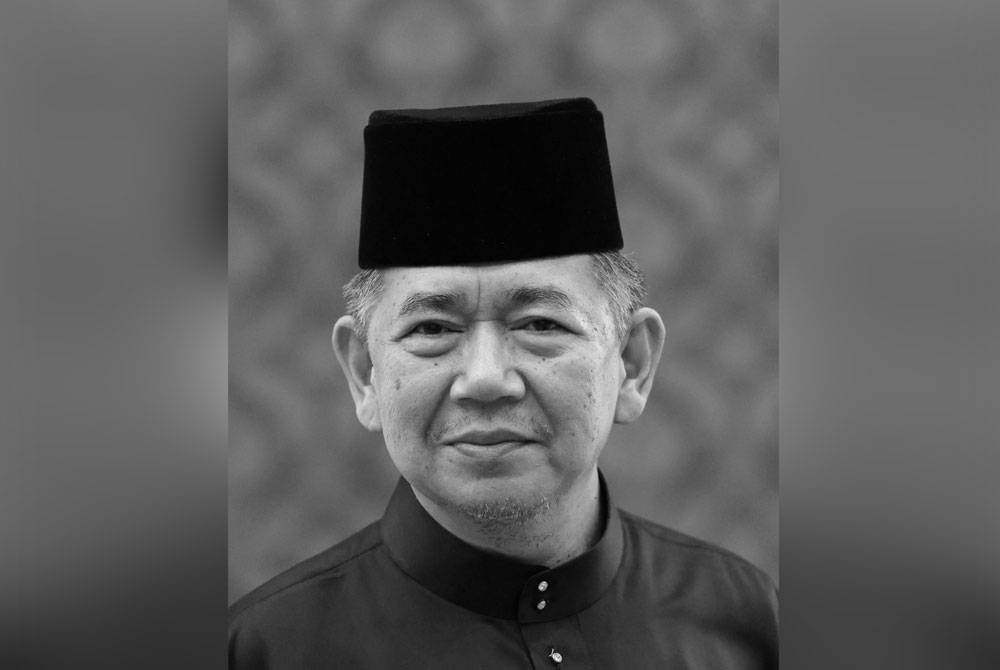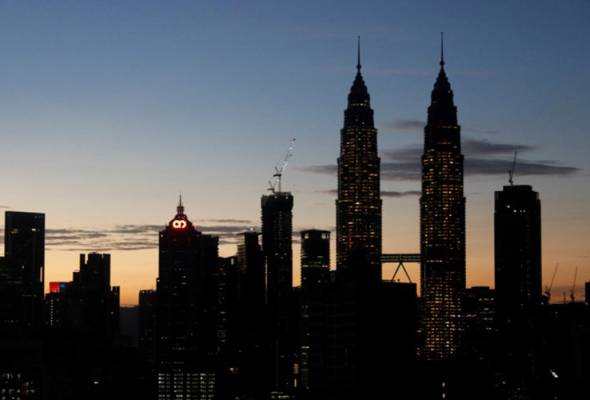
Published by AstroAwani, image by AstroAwani.
The electoral battle royale in what would be the most industrialised state in Malaysia – and the country’s foremost economic powerhouse – is shaping and gearing up with both Pakatan Harapan (PH) and Barisan Nasional (BN) which altogether constitute the Madani unity government (federal as well as state) having already declared their candidates for the state seats, accordingly. For example, PKR (Parti Keadilan Rakyat) of PH and Umno of BN announced their slate of candidates on July 23 and July 22, respectively. Opposition Perikatan Nasional (PN) followed suit by making their list of candidates known only on 26 July.
As the most industrialised and, by extension, developed state in the country combined with being resource-rich in terms of land and minerals (e.g., production of silica – which in turn takes the form of silicon wafer fabrication – for the semi-conductor industry, inter alia, sand mining both for domestic uses and export), etc., Selangor is, therefore, the crown jewel (among the six states having the elections).
Unsurprisingly, the electoral contest is fierce as PN is unabashed in vying to take control of the state too – even as it’s predominantly on the back of Malay votes (population-wise, Malays comprise only 54% but constitute 70% of the seats) to realise the ambition.
It could well be argued that the road to Putrajaya is through Selangor.
Although Selangor’s income per capita for 2022 was at RM59,908 behind Kuala Lumpur (at RM127,199), Labuan (at RM85,560), Sarawak (at RM80,857), and Penang (at RM69,684), the state has consistently remained as the nation’s largest gross domestic product (GDP) contributor.
According to the Department of Statistics (DOSM), Selangor contributed 25.5% to the country’s GDP in 2022. In 2021, Selangor’s contribution was 24.8%.
Selangor’s GDP exceeded the national level growth rate by 3.2%, which is 11.9% compared to the 8.7%.
According to MIDF Research in its “Exploring Opportunities in the Golden State of Malaysia” report, the current/latest figure “… surpassed the 12th Malaysia Plan’s (12MP) target rate of 23.6[%] by 2025”. The report highlighted that Selangor contributed 22.8% to the national GDP in 2015 and “… grew by [4.6%] per annum, against the nation’s [3%] per annum from 2016 to 2021” based on the compound annual growth rate (CAGR) computation.
Since 2015, Selangor’s unemployment rate has also remained lower than the national average.
According to DOSM, Selangor’s GDP was valued at RM343.5 billion in 2021 which is the largest and unrivalled in the country.
Selangor’s GDP performance is set against the backdrop of the state being the most populous (21.6% of the country’s population) and hosts the largest ever conurbation in Malaysia, namely the Klang Valley of which only 11% is covered by the Federal Territory of Kuala Lumpur as well as the wider Greater Kuala Lumpur region which encompasses eleven local councils in Selangor (with the rest comprising Kuala Lumpur City Hall, two local councils in Negeri Sembilan and one in Pahang).
Two of the country’s highly urbanised and developed cities are located in Selangor – Shah Alam (capital and administrative centre) and Petaling Jaya (financial, services, manufacturing and education hubs) alongside Cyberjaya which is the anchor city for the Multimedia Super Corridor (MSC) – our homegrown cybercity and digital hub and Silicon Valley aspirant. On July 26, it’s announced by the Minister for Local Government Development Nga Kor Ming that Klang is set to be the fourth city in Selangor (via the Klang Municipal Council/MPK upgraded to a city council).
According to incumbent/caretaker Menteri Besar Amiruddin Shari (PH), Selangor’s manufacturing sector now accounts for one-third (at 32.2%) of the country’s total, with an expansion rate of 9% by 2022 (“Caretaker MB: Selangor makes history with highest-ever contribution to Malaysia’s economy”, Malay Mail, June 27, 2023).
Meanwhile, Selangor’s construction sector also accounts for more than one-third nationwide (at 34.1%) in 2022. The services sector experienced the highest growth last year at 13.6% in 2022 compared to the other states.
In a boost to its GDP, Selangor had the highest visitor inflow nationwide last year. The state recorded over 22 million visitors, a 33.4% increase from the previous year (i.e., 2021).
One can, therefore, imagine the immense resources at the disposal of whoever wins the reins of Selangor which can either be deployed to a) project good governance and competency in the ultimate quest to capture Putrajaya as the seat of federal power or b) to dispense patronage to cronies (political, corporate) and grassroots as part of the bid to retain and expand power both within and beyond the state.
The following are some of the major issues in the upcoming Selangor state election:
- Cost of living – “mother of all issues”
PN has vowed to make the state elections a referendum on the leadership of Prime Minister Anwar Ibrahim, and the one principal issue in their political arsenal is the cost-of-living issue (and related issues of persistent inflationary pressures and the ringgit depreciation).
As the Klang Valley is the most expensive region in the country, overall, the cost-of-living issue would strike a chord and tug at the emotional heartstrings of voters, especially the struggling urban poor Malays in the state, i.e., the lower income and the B40.
In addition, urbanite M40 folks are also struggling and feeling the pinch or squeeze from the loss of purchasing power exacerbated by the consecutive Overnight Policy Rate (OPR) hikes.
It’s to be noted that slightly more than half – 53.8% – of the T20 live in the Klang Valley. This then definitively impacts on the prices of goods at shopping outlets which is more reflective of the cost of living as it’s correlated to the overall expenditure of the household (in contrast to wet markets which attracts a smaller market and limited in food products – analogous to the difference between headline and core inflation with the latter considered as a more reliable indicator).
This in the wider context of fast-moving consumer goods/FMCG – especially as embodied by canned/tinned, instant and other packaged food products and beverages alongside frozen (e.g., poultry) and fresh produce (red meat, vegetables, fruits) which constitute a mainstay of the B40’s and M40’s consumption and spending patterns and, by extension, cost-of-living.
As it is, generally, retailers (supermarkets, hypermarkets, convenience stores) don’t differentiate between segments of purchasing power and, by extension, expenditure patterns, with the focus more on competition for market share.
So, markups aren’t influenced by the income classifications as such but costs conditioned by the respective supply chains.
Additionally, food expenses in terms of eating out and takeaway in the Klang Valley are typically between 20% to 30% higher than the next in line or nearest comparison, i.e., counterpart conurbations, e.g., Penang.
- The proposed PJD (Petaling Jaya Dispersal (Link)
This issue is controversial and unpopular among some Petaling Jaya residents, especially those who are affected due to either the alignment which runs through their areas or otherwise due to acquisition of their properties.
In addition to the alignment and acquisition issues are concerns over noise and air pollution and scepticism regarding their effectiveness in reducing traffic jams in Petaling Jaya city centre and the LDP highway.
The manner in which the Selangor state government has dealt with the residents’ concerns and grievances have increased mistrust which may result in some protest votes although the magnitude wouldn’t be strong enough to cause a significant swing in its own right.
- Indian community issues
Unlike in Penang, there remains an intense mistrust among a rump/residual of Indian voters in Selangor due to long-standing unresolved issues involving housing and relocation of former estate plantation workers, protection of Hindu temples and shrines, job and business opportunities, etc.
Recently, sidelined by Umno in seat negotiations with PH, MCA and MIC have decided to sit out of the polls and campaigned for BN only.
But some MIC members and former members have taken things a step further by openly supporting PN which have formed a secretariat dedicated to the community. Rumours have it that the secretariat is then expected to morph into a fully-fledged autonomous party aligned to PN.
The impact could be strong enough to cost PH and BN in constituencies outside the Klang Valley.
- Disgruntlement of Umno members and voters
Many BN members (both leaders and rank-and-file) and voters, especially and particularly in relation to Umno specifically, are still disgruntled and miffed that they are being asked to support and vote for traditional and onetime greatest antagonist PH, especially archnemesis DAP, when it had been a policy stance and battle cry of the party that it’s “No Anwar, No DAP”.
To make an abrupt turn of direction – which simultaneously involve a breach with erstwhile ally Pas (albeit now in PN) – would be something hard to swallow for these folks.
Yet, the counterargument, which is hard to gain say, would be that Umno faces no strategic competition with PH in terms of its long-term survival whereas it’s Bersatu’s ultimate aim to finally destroy the historically foremost and pre-eminent Malay party.
Notwithstanding, according to one pre-election survey among Malay voters in Selangor, it’s argued that there’s no significant vote transferability between PH and BN (“Why Perikatan Nasional May Win in Selangor”, Marzuki Mohamad and Khairul Syakirin Zulkifli, Perspective, Iseas-Yusof Ishak Institute, No. 50, 5 July 2023).
The survey found that 39% of Malay voters in Selangor who voted for BN in GE15 indicated that they will vote for PN in the upcoming state election if there’s a straight fight between PN and PH in their constituency. Only 15% said they will vote for PH (p. 5).
The finding is reflective of Bridget Welsh’s GE15 post-election analysis of Malay support for political parties in Selangor, i.e., 23% for BN, 24% for PH and 49% for PN.
Accordingly, if true, the result could see PN sweeping at least 29 out of the 39 Malay majority seats in the Selangor state assembly to get a simple majority to form the next government.
Whilst it might not still be absolutely clear whether PN can defeat PH and BN and wrest control of Selangor, PH’s feat in winning of 52 out of 54 state seats (a whopping 93% win) wouldn’t, in all likelihood, be repeated, albeit on a different scale. It could even prove an uphill task for PH to win a super-majority of 75% of seats and above.
What’s definitively clear is that the Selangor state election boils down to winning the hearts and minds of the Malay voters, especially that of the semi-urban and semi-rural seats of which Klang Valley – as embodying the core of PH support – is sandwiched.
Whilst the Madani government has taken pro-active steps to address and tackle the cost-of-living such as introducing Menu Rahmah, etc., drastic measures are needed to assure the rakyat, especially those living in the most industrialised and highly developed state of Selangor.
One of the policy steps which need consideration and resonates with the rakyat is for Parliament to enhance accountability for the conduct of monetary policy in terms of setting the interest rate in the form of the OPR by amending section 73 of the Central Bank Act (2009) in order to override Bank Negara’s Monetary Policy Committee (MPC) from raising the OPR and instead lower it to 1.75% and leave the rate there over the medium (3 years) to long-term (5 years) before reviewing the situation. Jason Loh Seong Wei is Head of Social, Law & Human Rights at EMIR Research, an independent think tank focussed on strategic policy recommendations based on rigorous research.

